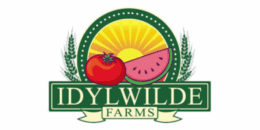The Town of Acton and the Acton Water District celebrated a new resilience project on August 20, with the launch of the “Red House Pocket Park” at 468 Main Street, across Woodbury Lane from Town Hall. The Pocket Park, though small, is an inviting green space with gardens, a trail, a picnic area, and benches. It also demonstrates how natural solutions, such as native plantings and tree cover, can address hazards like flooding, erosion, drought and heat islands.
Representatives from the Acton Water District (AWD), Acton Memorial Library (AML), the town Conservation Department, the Department of Public Works (DPW), and the Sustainability Office welcomed local families and community leaders to the redesigned outdoor space that aims to model good water management, biodiversity, and resilience practices. Sustainability Director Andrea Becerra explained, “The Red House Pocket Park has four key areas — the restored meadow area, the pollinator garden, the rain garden, and the shade garden. Tying it all together is the new outdoor classroom area with picnic tables where we can hold talks, do projects, and engage the community on climate resilience.” Mother Nature seemed to approve, as the rain let up in time for people to explore, chat, and play with the goats that were the guests of honor.

Acton Water District environmental analyst Shawn Case emphasized that the rain garden and rain barrels in the park are two improvements that Acton residents can implement at their own homes. “When we have extended dry periods like this summer, then an intense storm, water often runs off the hardened ground without being absorbed.” Case noted that this is bad for the Water District. “Most Town water comes from sand and gravel wells, where we need water absorption. Rain gardens help in multiple ways, because the native plants soak up the rain much faster and more thoroughly than dried-up lawns, plus the plants help filter out pollutants. Not to mention that rain gardens help deter erosion and foster biodiversity.”
Signage throughout the property describes the sustainable landscaping and why it is needed. The sign by the rain barrel even tells Acton residents about the special Water District spring discount on rain barrels.
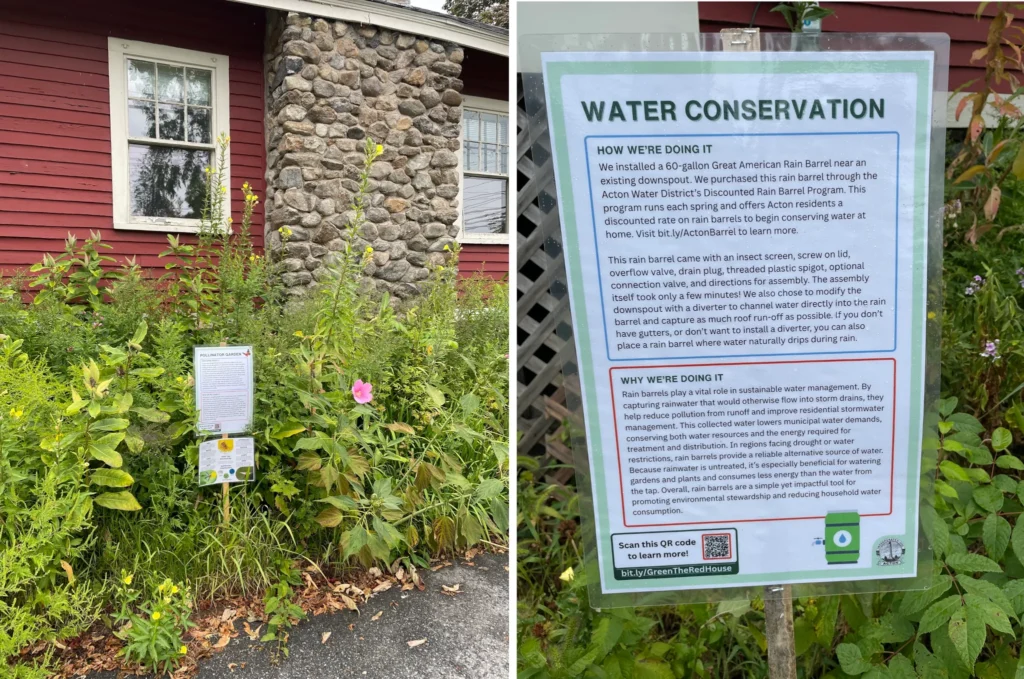
Residents Alison Norman and her daughter, Avery, were delighted to discover the meadow area. “We never knew this was here!” Frequent patrons of the library, just across Woodbury Lane, they were happy to know that the picnic tables and meadow trail were open to the public anytime. As a family active in the scouts, they especially enjoyed the environmental story walk created by Acton Girl Scout Ambassador Suravi Bhatia.
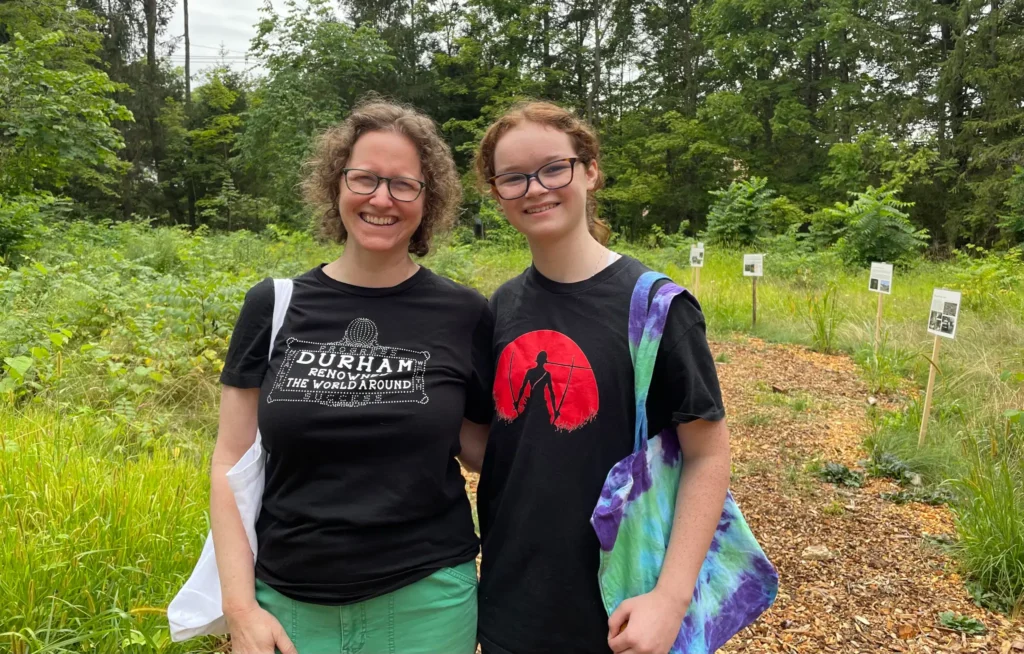
Community Conservation Specialist Ian Bergemann was also keen to talk about the meadow. He mentioned that the area is actually the Red House’s septic system leach field, which most people think of as an undevelopable space. “This is an example where you can use a leaching field as a natural resource, both to function for your wastewater but also to function as a biodiversity hot spot.” Bergemann hopes that Acton residents will be inspired to spread wildflower seed on their own leach fields, converting dry lawns to pockets of bug paradise. When questioned about the potential lack of homeowner enthusiasm for bug habitat, Bergemann noted that many residents face the question, “How, as a property owner, can you allow wildlife to co-exist with yourself?” He affirmed that the meadow area is a “great educational opportunity,” helping local people explore and appreciate healthy ecology, including ideas for living side-by-side with the natural world.
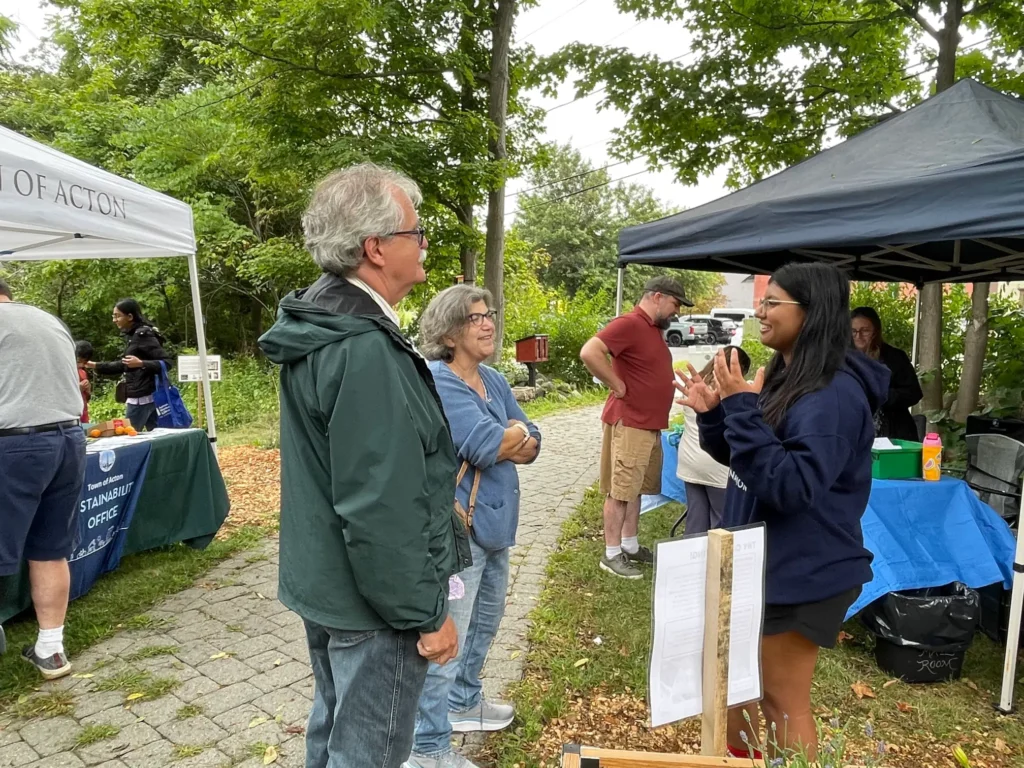
Sustainability Director Becerra looks forward to the space as a beautiful resource for Acton residents. “What a privilege it’s been to work with the Acton Water District, the Conservation Department, and the Department of Public Works on this project. It was a real municipal-wide effort, not to mention helpful feedback from the Acton Memorial Library staff and from community groups like the Acton Garden Club, Green Acton, and Energize Acton.” The vision of a resilient landscape was made possible by grants from the Metropolitan Area Planning Council (MAPC) and the SuAsCo CISMA program (the Cooperative Invasive Species Management Area of the Sudbury/Assabet/Concord River Watershed). Additional funding from the Community Preservation Act will enable the Town to implement added features to improve the accessibility of the space and incorporate additional climate resilience elements, such as a bioswale to capture rainwater.
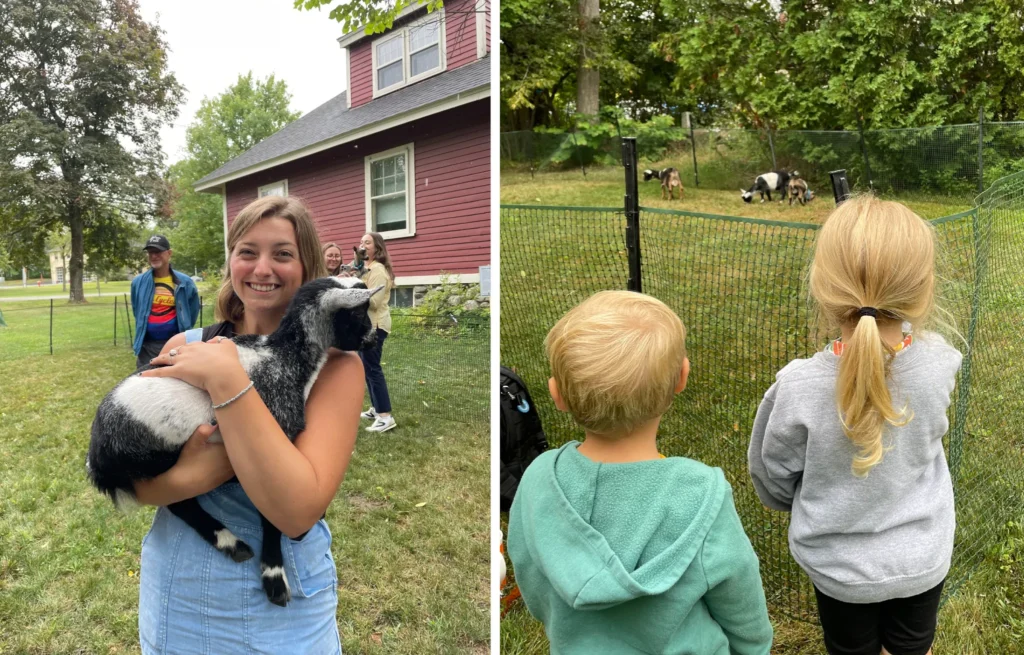
The visitors at the Red House Pocket Park Launch were positive about the project and excited about the educational potential of the space, from wildflower walks, story walks, and nature crafts, to programming about land and home resilience. Of course, the children got their input. One three-year-old exclaimed that he liked the goats the best! (Unfortunately, the goats were visitors for only the day.) An early elementary student, thinking about bug paradise, stated her preference. “I like the dragonflies.” But her younger brother got the last word. “I vote for hornets!”
Karen Root Watkins is the Education Outreach Facilitator for EnergizeActon.org, a community website and clean energy/climate education group sponsored by the Acton Climate Coalition and the Town of Acton Sustainability Office.


